
We spent one night in A Coruna. The
next morning we spent an hour exploring the sights close to
the hotel
and then headed inland to the southeast to the Walled City
of Lugo. From Lugo, we returned to the coast and
continued east to a unique place that Kathleen found called
"Torre de Villademoros".
The photos below are what we saw.

In A
Coruna, our hotel was out on a point and gave us a nice view of
both the city and the coastline. This part of the city has
a nice stone walkway that follows the coastline. Note the
tall twin towers to the south across the bay.


A bit to
the west was a field of stacked stones that had been notched to
form windows.

With the
rising sun behind me and a correct positioning I was able to see
the Tower of Hercules through the carved window.
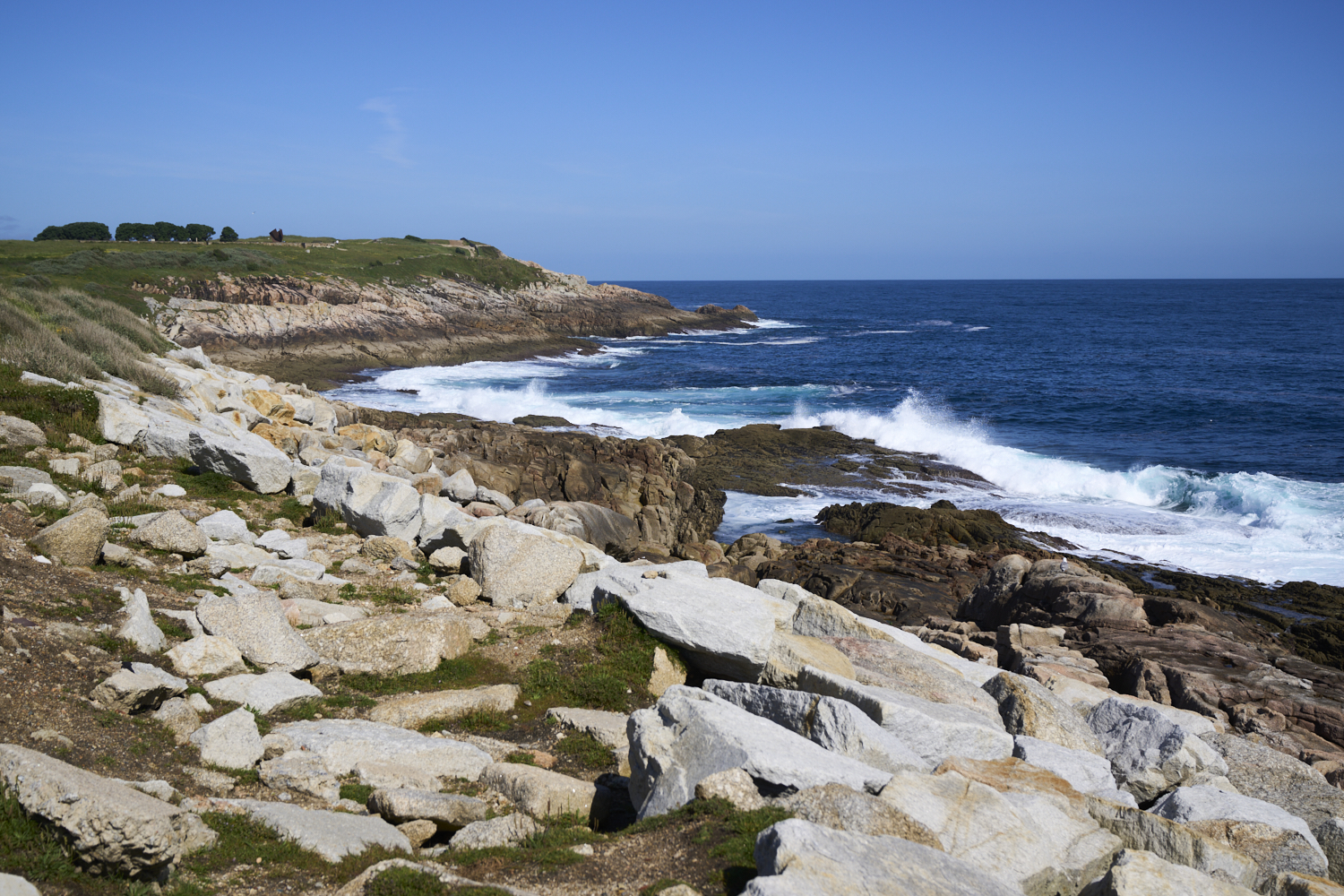

We got
fuel in A Coruna and then headed to the southeast to the Walled
City of Lugo. The city walls were started by the Romans in
the 1st century A.D. and have been maintained and preserved by
subsequent rulers. The current city within the walls is
quite different than the city without. Both have narrow
streets, but the city within has vehicle prohibitions, resulting
in a pedestrian plaza. There were several gates into the
city, and Kathleen found a gate that had parking right across
the street. We parked, dismounted and began our
exploration.

The
walls are tall and are made of stacked sheets of slate, as
opposed to the cut granite frequently seen in other castles.

Inside
the walls, shops and homes filled every square meter.
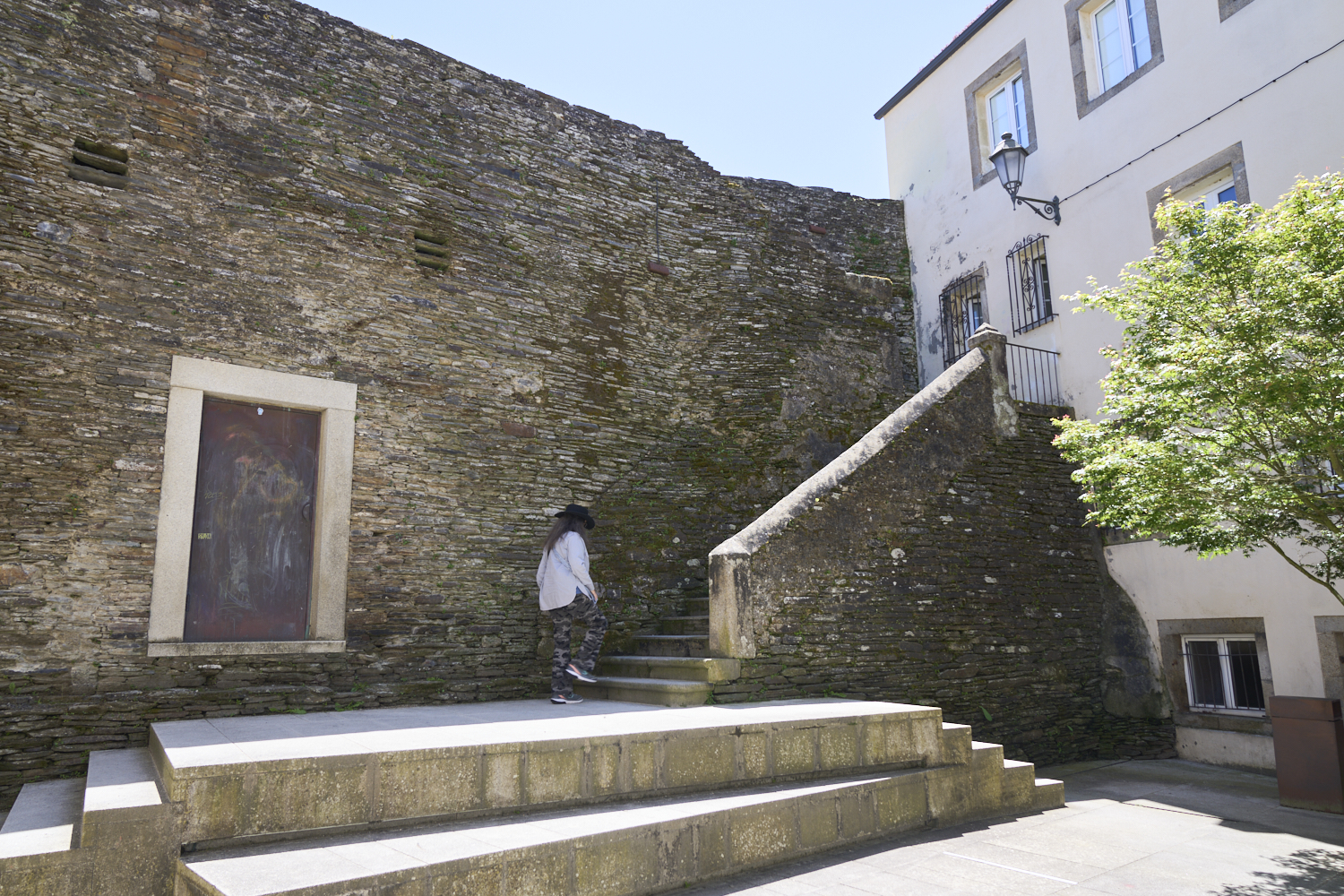
The
walls have a set of stairs that provide access to the top of the
walls for defense so we went to check it out. You can walk
around the entire inner city on the top of the walls.

From the
top of the walls, we could see the (really tight) underground
parking for the area. There is a supermarket on the ground
floor, parking below and apartments above.
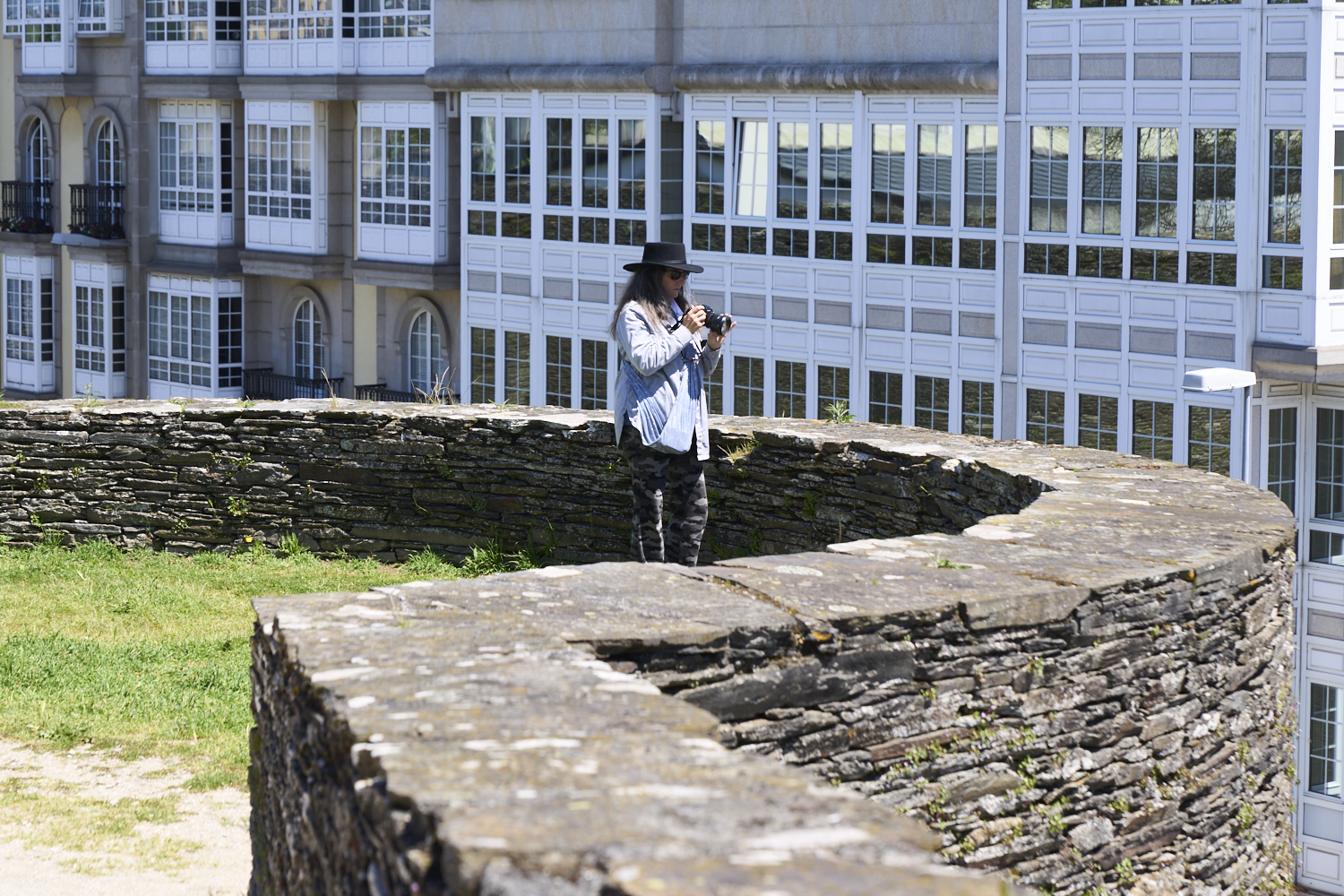
Kathleen
took many photos from the top of the walls.

Even
outside the walls, not all buildings had been maintained.
Some of the worst had roof collapses that rendered them
unusable. Buildings on either side were currently in use.

On the
top there were remnants of another kind of portal. It was
lunch time, we were hungry so we returned to the ground level
and found an awesome sidewalk cafe that had some of the best
food we have experienced thus far on this trip. It was a 3
course tasting menu of pibil pork tacos with pico de gallo,
salmon fillet and homemade torta de queso. Excellent!
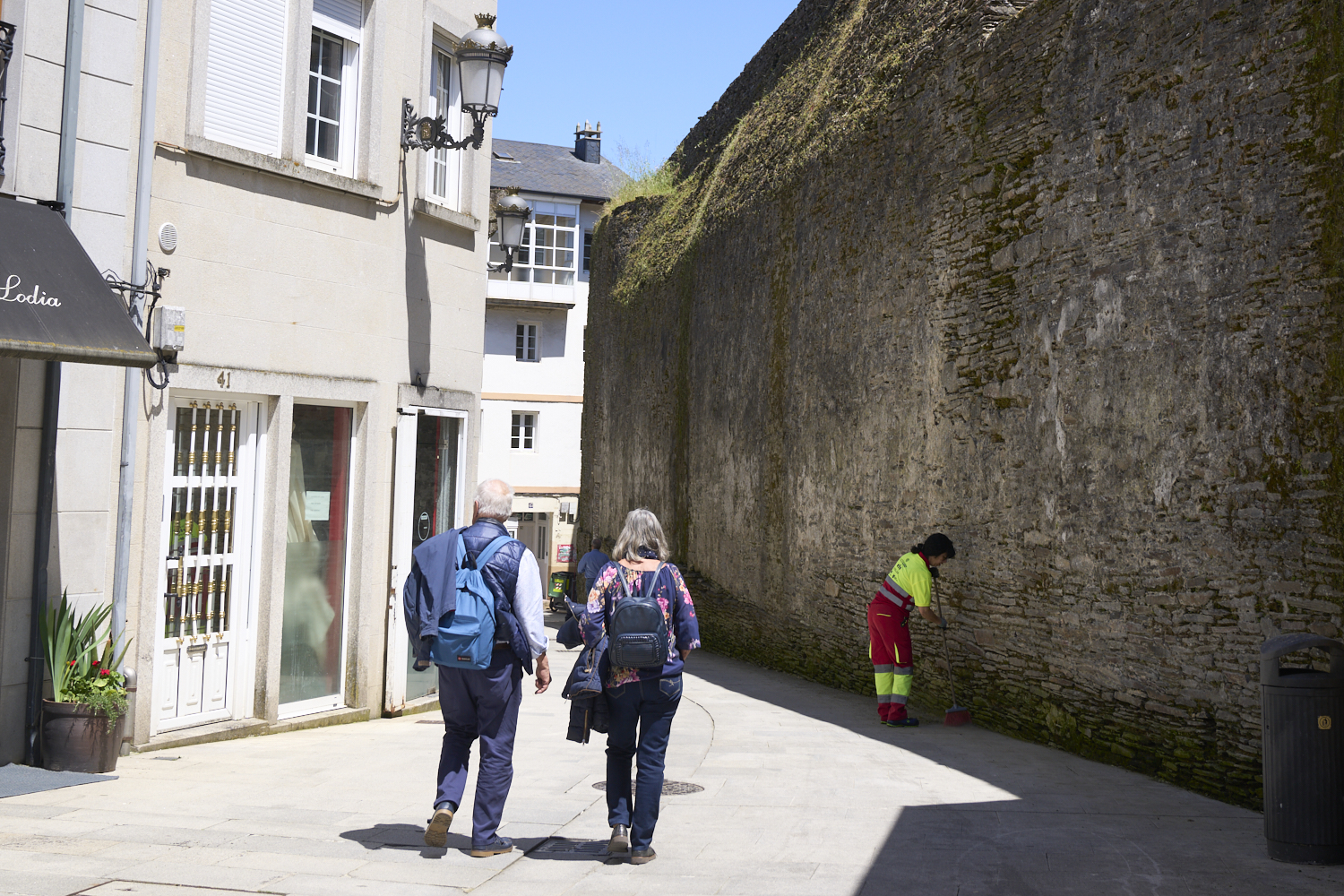
The
story of this photo is the woman with the broom. Old
structures decay day by day. In this case, the wall bleeds
sand and pebbles that spall-off due to freeze-thaw and thermal
expansion. Her sole mission is to sweep up the debris that
is produced by this process to keep the walkways clean and
clear. She has a job for life.
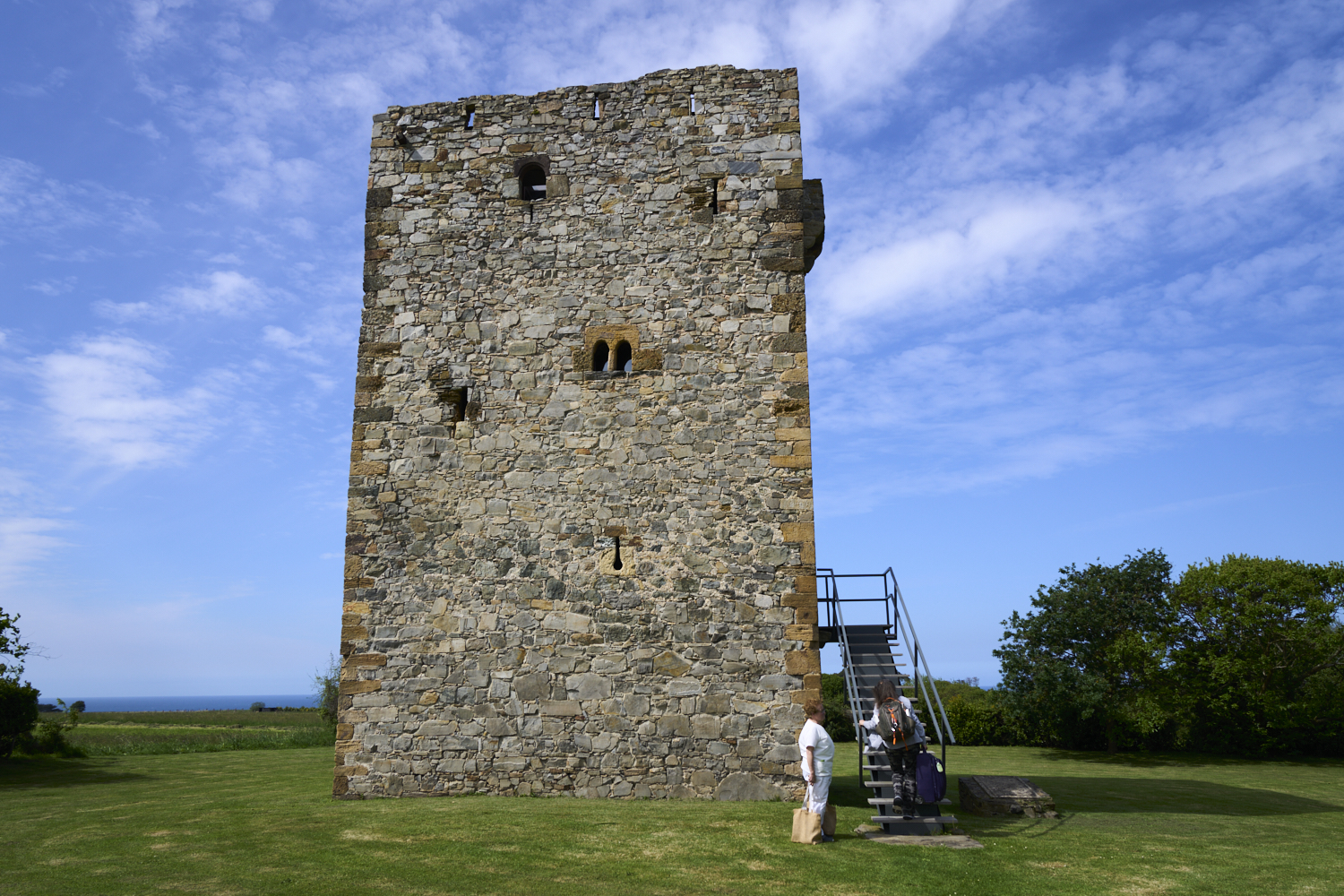
We
finished lunch in Lugo and had a white-knuckle ride through the
city to get to the motorway. We traveled east several
hours to our destination for the night: Torre de
Villademoros. To get there required travel on some really
tight walled roads that wound through farmland. The trip
was worth it as we arrived at the Torre (tower). Kathleen
had booked the tower room for us; Steve got a conventional room
inside the main hotel. Access to the tower was difficult
due to the requirement to haul our stuff up multiple flights of
stairs. But, we prevailed.
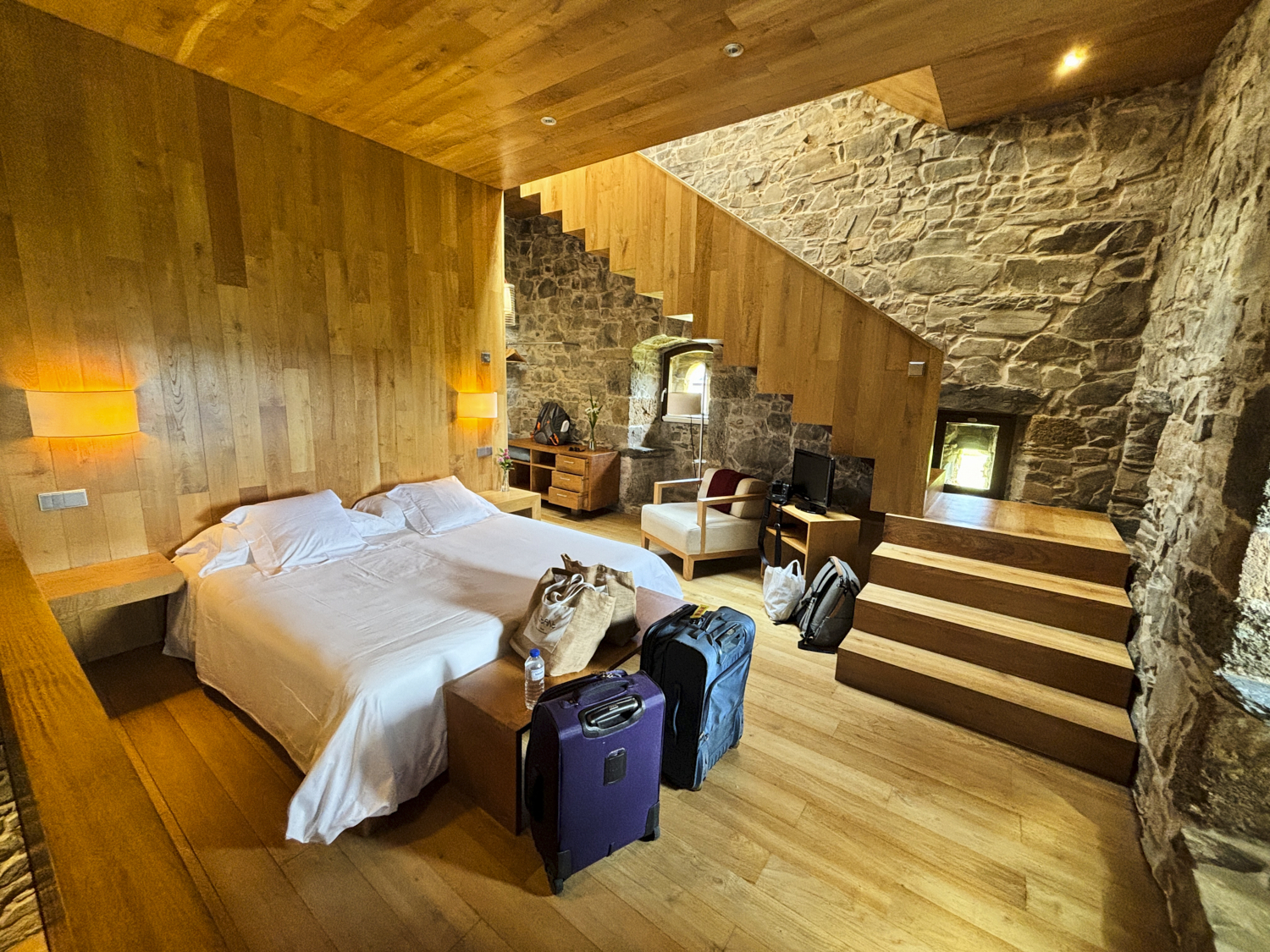
The
bedroom on the "first" floor was impressive. Stairs led up
to the living room upstairs and to the roof overlook above.

The
windows were the original portals retrofitted with modern
dual-pain glass.

The
bathroom was contemporary with the currently-en-vogue countertop
sink basins.

Rather
odd toilet and bidet, but the shower was nice.
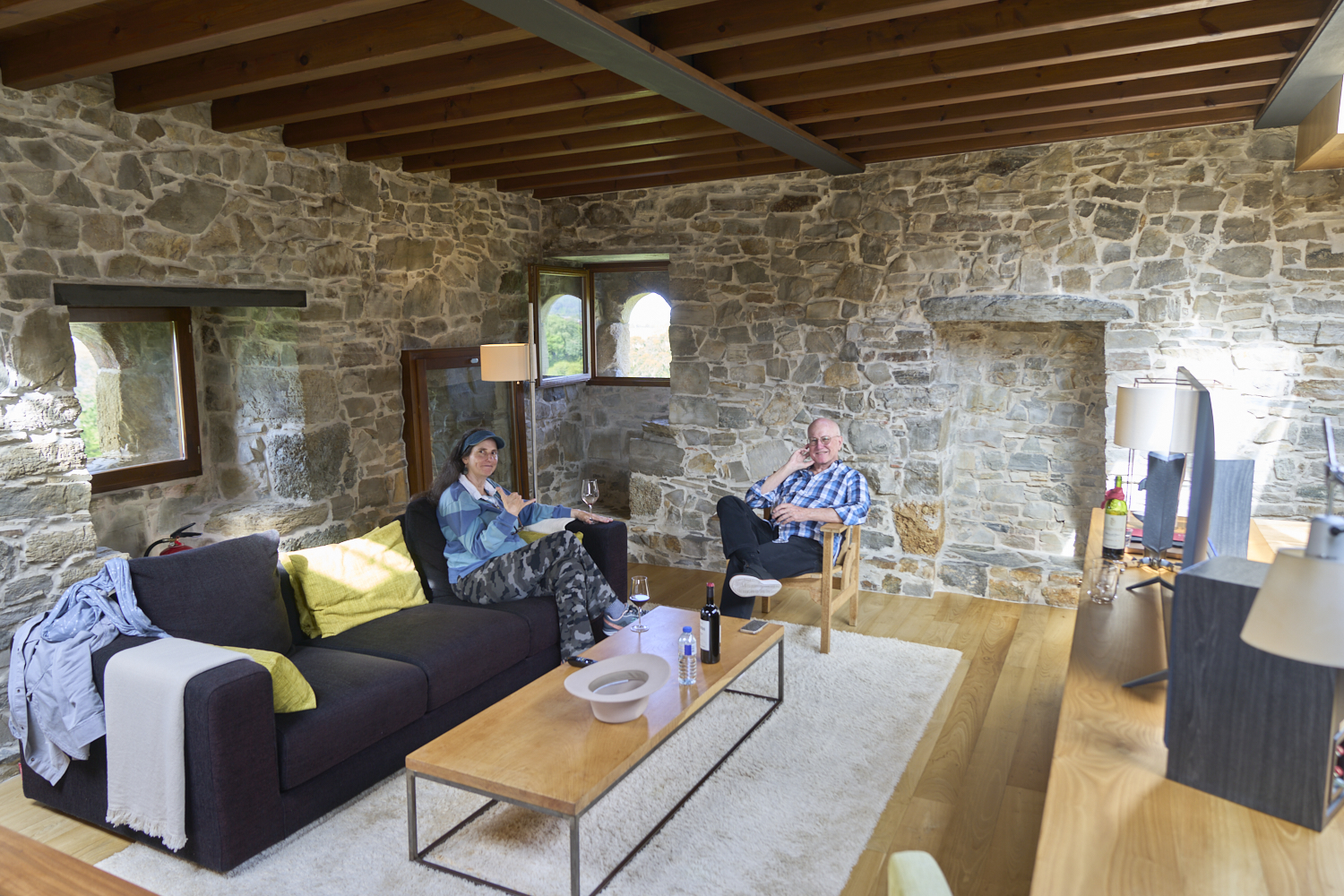
We had
the foresight to purchase several bottles of local wine while in
the supermarket in Lugo. The room had an opener and
glasses, so we attacked with full force.

Dinner
at the hotel was magnificent. We had a great night and
the following morning we checked out and headed north on the
tight country roads to see the beach cliffs. The tide
was out when we arrived, but we could see folks on the
beach. The north-facing beaches are steep and surely
take a beating during winter storms.
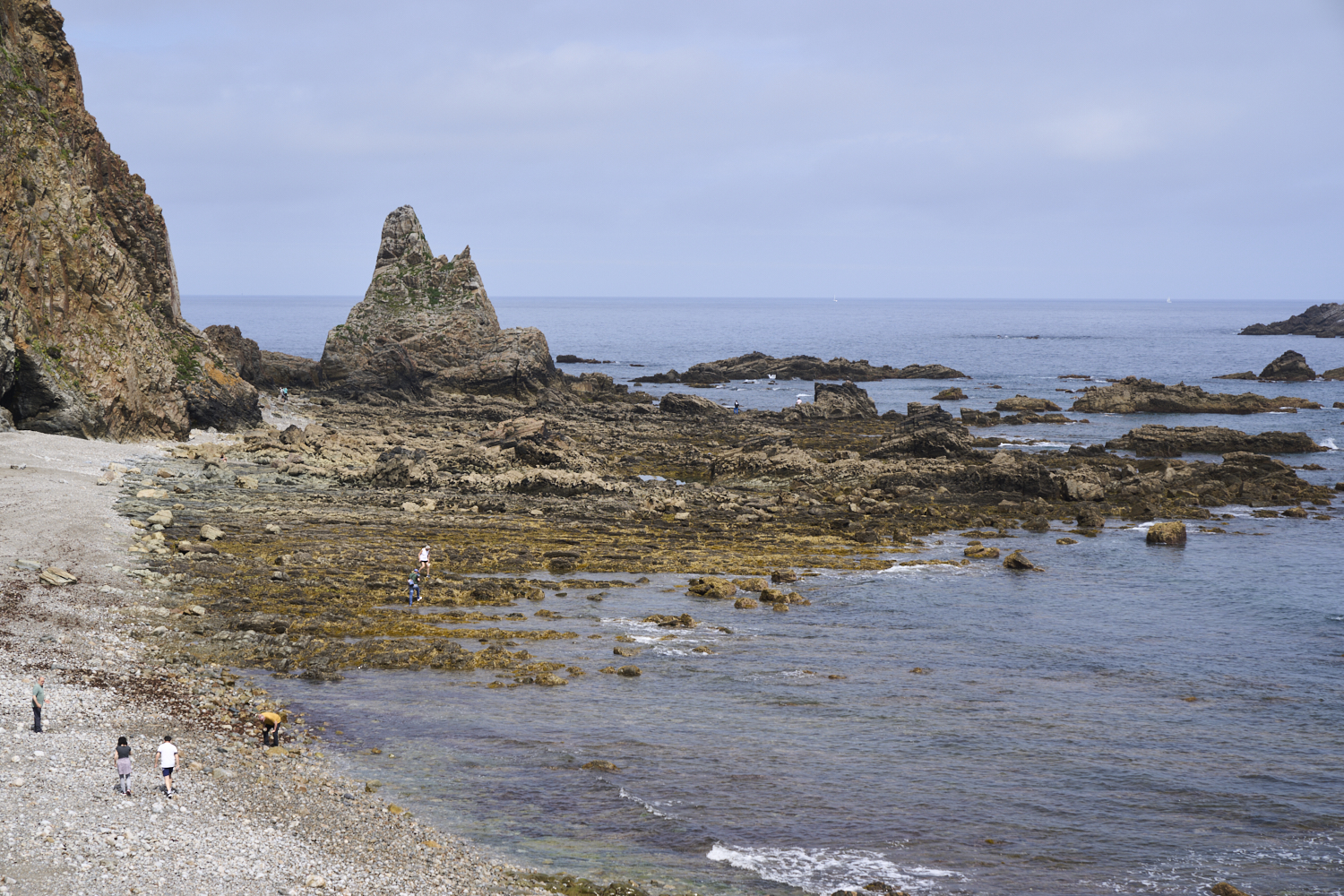
The
tide has exposed a large rocky area in the tidal zone.

Teams
of folks were out on the rocks clamming, fishing and searching
for mussels. We completed our beach excursion and headed
back to the motorway to head east. Our objective was the
cave art site at Altamira.

We
passed this fellow on the motorway and by chance he ended up
at our fuel stop so we went over to chat. This rig is an
ex-mil Bedford from the U.K. army. It was in good shape
and they were literally giving them away, so he used it as a
basis for a build. He found a "horse bed" that fit on
the back and did a conversion on the equine transport portion
to create a camper. The fellow's name is Arthur and he
lives in the Cornwall area. He stated that it had rained
every day for 13 months straight, so he packed and headed to
Iberia for a break.

With
Kathleen's good navigation, we ended up at Altamira a few
hours later. The Altamira cave site was discovered (by
modern man) in 1879. Since then, its popularity had
grown to the point that the visitors were damaging the art, so
the original cave was closed and a replica was created about
100 meters away. The interior is a faithful reproduction
complete with each of the artworks in their respective
positions. The majority of the big works were done on
the ceiling making direct viewing a pain in the neck
(literally), but taking photos overhead, particularly with an
iPhone is not so bad. These works were done in the
paleolithic period using ochre, charcoal, and other pigments
as well as simple scratching. Current estimates suggest
that these works were done about 20,000 years ago and are some
of the earliest known works by man.

A
variety of animals were depicted including goats, sheep, deer
and buffalo.
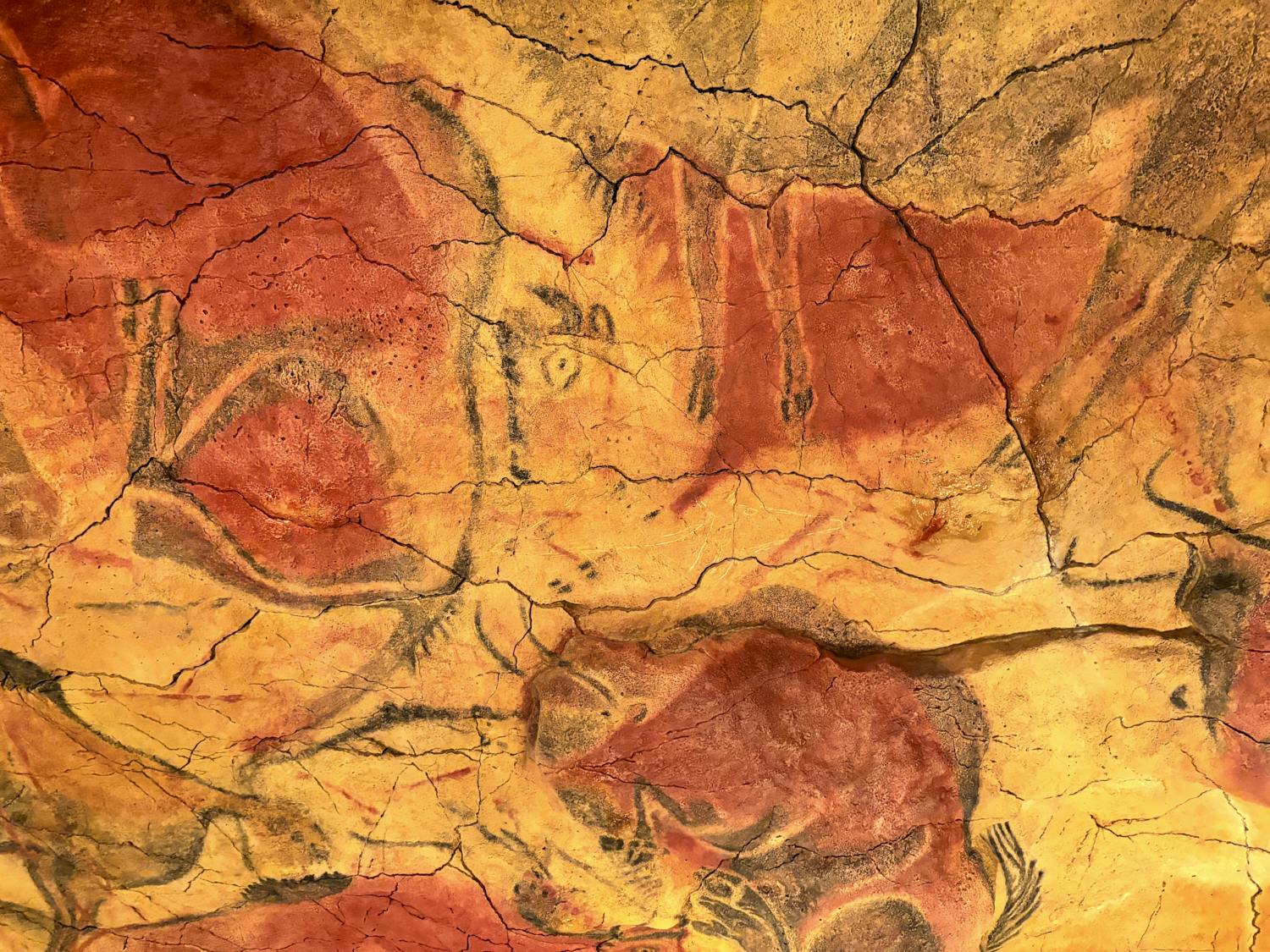
The
art was somewhere between abstract and representational and
the story being told is open to interpretation.

Some
of the works were in ochre, others in charcoal.

This
panel appears to be a red deer painted in ochre. The
museum associated with the cave was very informative and had a
number of good displays of implements and artifacts unearthed
at the site.
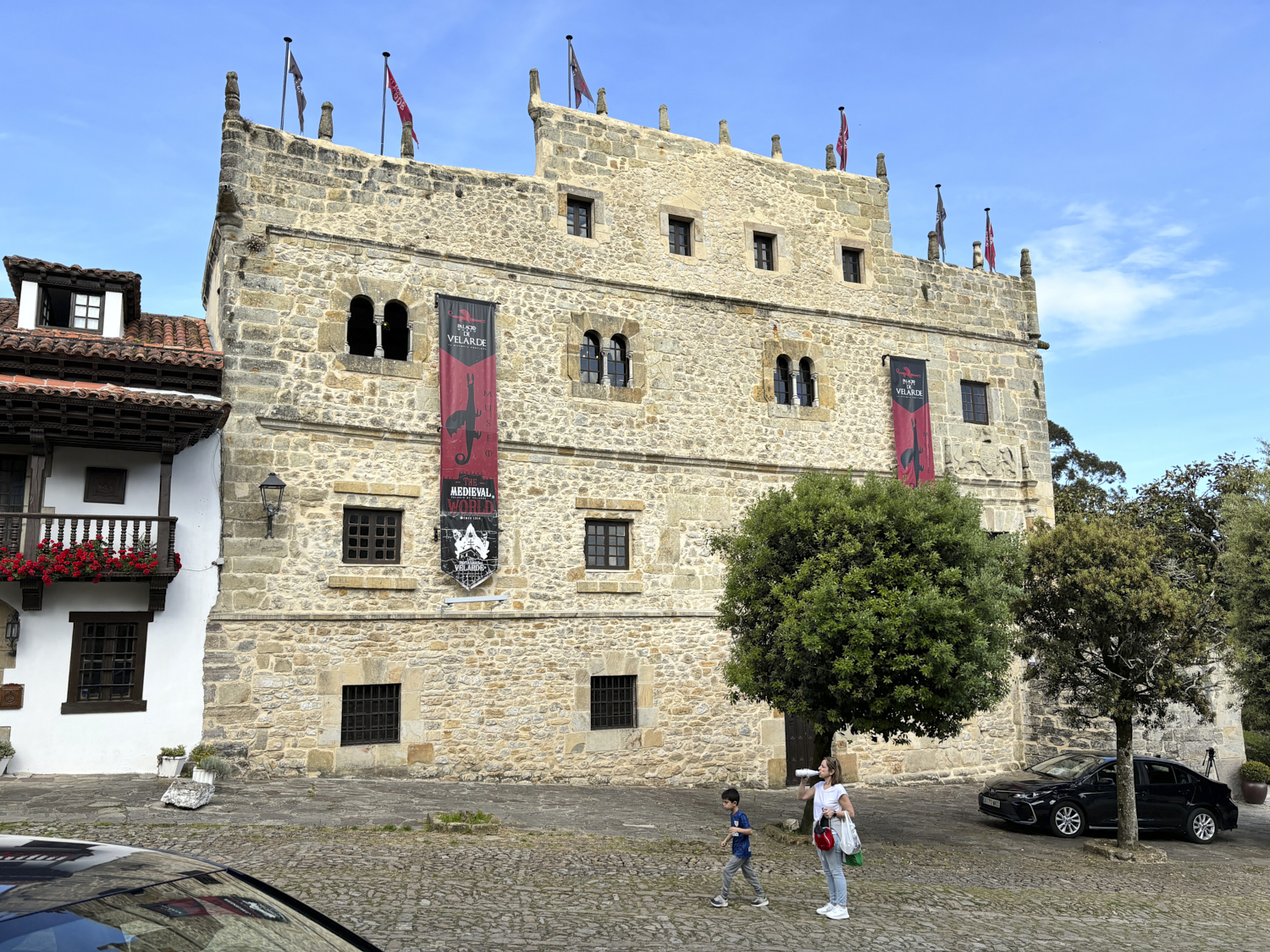
We
finished at Altamira and headed to our hotel in Santillana del
Mar which was only a few miles away. But, as has been
our luck, our arrival corresponded with both a local festival
and a high school soccer game resulting in huge pedestrian
crowds. Santillana del Mar is also a walled village, so
no parking is allowed in the center of the historical
area. We had to walk about 500m from the public parking
back to the hotel, but since we had already disgorged our
luggage at the hotel, it was OK.


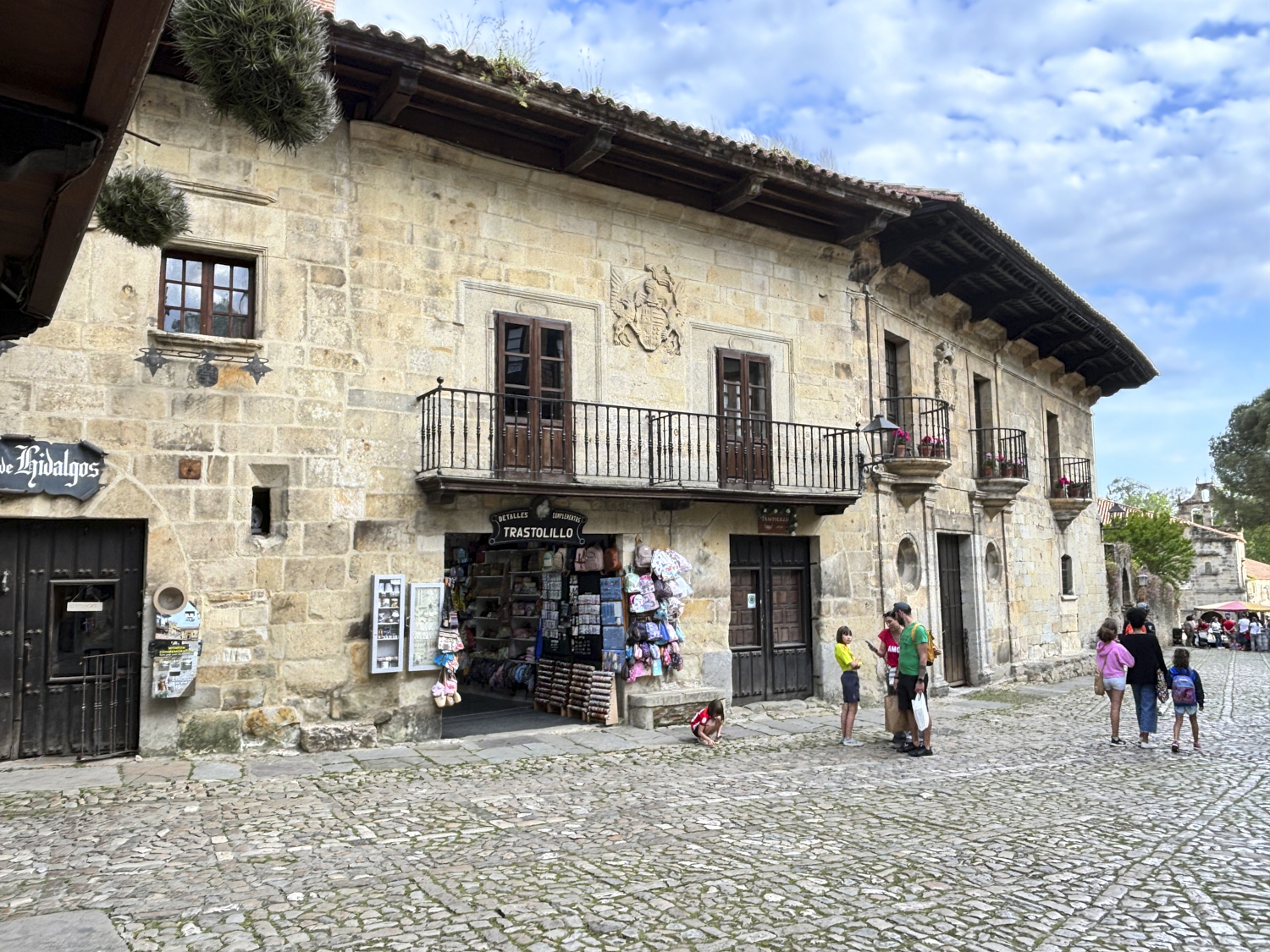

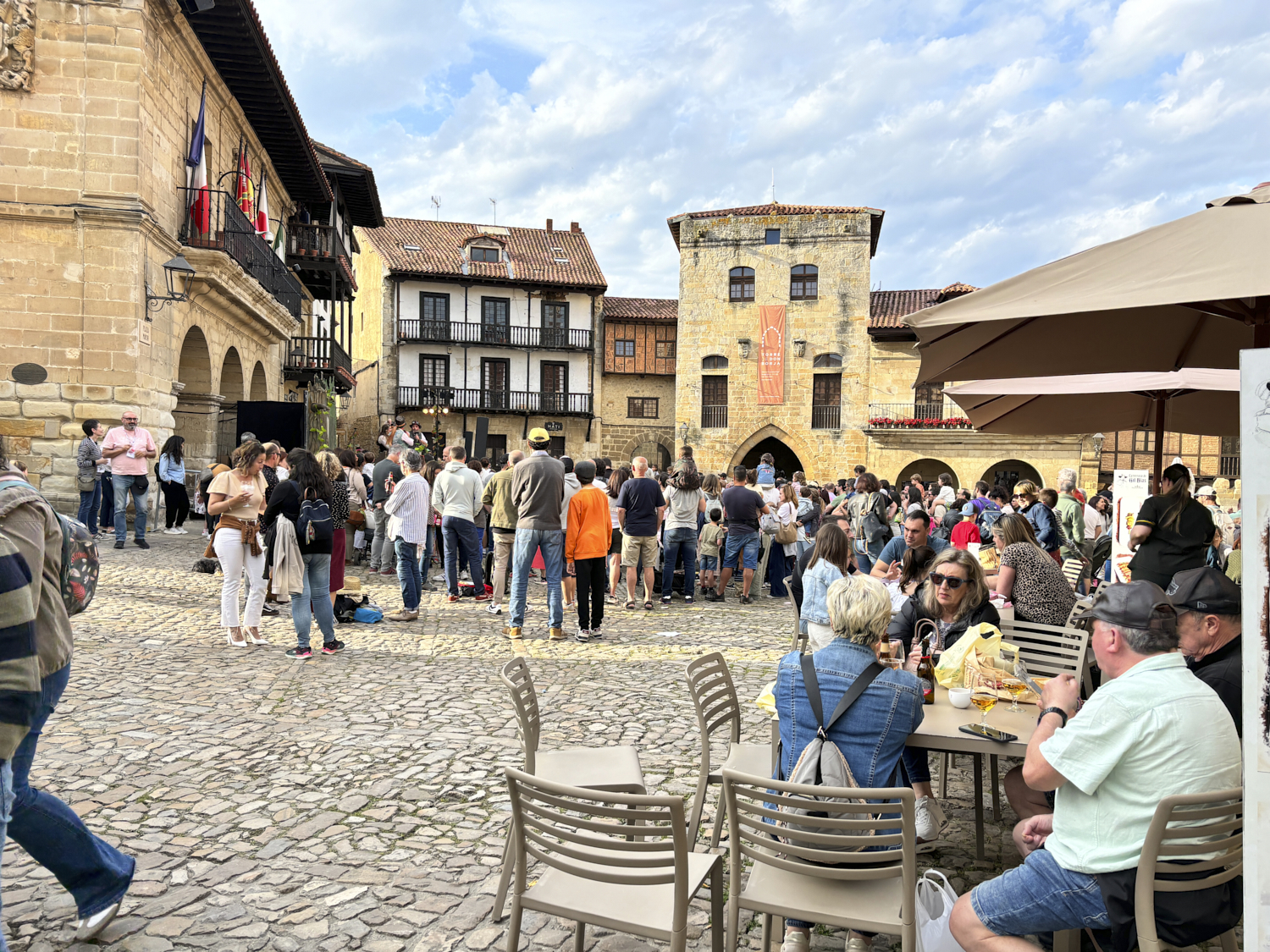




| Previous Adventure | ||
| Trip Home Page |
Photos and Text Copyright Bill Caid 2024, all rights
reserved.
For your enjoyment only, not for commercial use.